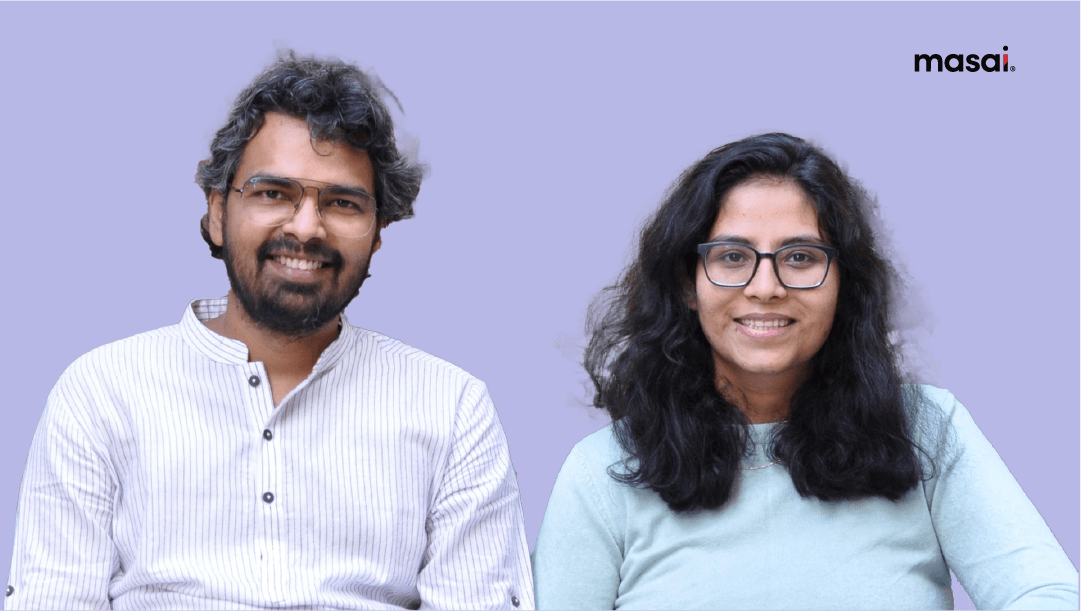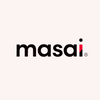Acquiring Design Shift Academy to ramp up courses in UI & UX Design and Product Management
In terms of what they were trying to do and how Design can actually lead to employability, the couple understood that there was complete alignment between them and Masai School.

Recently, we at Masai School have acquired the Bengaluru-based design institute Design Shift Academy. The idea is to add extra engines to the course curriculum and to introduce new and planned courses in UI & UX Design and Product Management. These new courses are in addition to the already established courses in Website Development and Android Development for aspiring software developers.
As fate would have it, while Masai School was having its own plans to introduce these new courses, Design Shift was also looking to start classes in software development and coding. With mutual interests aligned, the acquisition deal only made more sense for both organizations, which we believe comes at the right time with respect to the market conditions and requirements.
Sudhir Mor, the cofounder of the startup says,
“Design is not just about learning tools and making screens look pretty, which most institutes do at the moment. We want to be away from that phenomenon and focus on the actual science behind the design. Elements like UX Design, Interaction Design, Usability, and Human Psychology among others constitute together to create a human-centered process or a design flow to make tech products more desirable.”
Preeti Sheokand, his wife, and Sudhir Mor started Design Shift Academy towards the end of 2017, in Bengaluru. Their problem statement was the lack of quality designers in the market who were not able to answer basic questions like what UX Design is, in interviews. With an intention to give back to the community, the husband-wife duo set out to start the academy themselves and teach design.
How did Design Shift start?
The 2018 New Year’s resolution for Preeti and Sudhir was to start off proceedings by teaching 8 students who were passionate about learning design. Their Bengaluru home could accommodate only 8 people, and hence they could make do with that number. They put out a social media post and received 300 applications for the first cohort. Having shortlisted 8, Design Shift Academy was started from their dining table.
With no intention to ask for any fee from this cohort, the couple stumbled upon a student who insisted that she paid some fee. As there were more and more students who showed interest in the idea and were also willing to pay, they realized that this was a viable idea and the market did need institutionalized design education. With word-of-mouth and the old social media post getting sudden bouts of traction every once in a while, the academy hosted 16 batches of students at one time.
There were only a handful of design institutes, and the demand and supply gap was very skewed. Besides, Preeti and Sudhir were also actively reaching out to their friends working in corporate and tech and understood that technology and design were not really intersecting with each other. Being UX designers themselves, and having practiced it over many years and with the plethora of hiring-related complaints they had heard during user research, the duo decided that it was only a natural transition into starting up a business like this.
Preeti said, “Design education is a very niche segment even now. The existing design institutes have started moving towards coaching and training in UI and UX design, product design, and automotive design only very recently. The term UI/UX design is used only by the industry but not by design colleges themselves. Institutes like the National Institute of Design would use terms like Interaction Design or Information Design in their course curriculum. Considering that the lifecycle of this talent actually starts when they reach the industry and real-world applications, it is hard to establish an idea of mainstreaming when it comes to design education in UI/UX.”
However, the maturity and awareness of design education are increasing and are currently moving in the right direction. Preeti believes that design education is going to be the next wave in terms of technology. Mere design tools can be learned by just learning them on YouTube tutorials. But the aspect of human experience involved in this is the toughest problem to solve, and that is what Design Shift aims to focus on.
Design Shift is a fully bootstrapped business and primarily worked on weekend batches. The team has about 15 members who take some time away from their full-time jobs and teach design on the weekends. The business model was centered around upfront-fee courses but Preeti and Sudhir wanted to go the ISA route, like Masai School. A ‘blended model of education delivery’, as they like to call it, the students at Design Shift had students joining live online classes from countries like Turkey, Australia apart from the likes of Bengaluru and the rest of India.
The story so far
Preeti studied Organic Chemistry at the University of Mumbai and Sudhir is a Mechanical Engineer. They went to Srishti Institute of Art, Design and Technology, and National Institute of Design, Ahmedabad respectively for their Master’s degrees. Preeti worked as a design consultant at the likes of Shell, Siemens, QikPod, SymphonyAI while Sudhir worked at Target, Deloitte Digital, Honeywell, Ola Electric. They were both working full-time at their last organizations while running Design Shift over the weekends.
“Like many other designers in the industry, I was also struggling to find employment towards the end of my Master’s. Sudhir was then working and we were exchanging interesting notes over the relevance of Design in both academia and industry”, says Preeti.
The duo eventually fell in love and got married.
Sudhir was one of the first few employees at Ola Electric who set up the entire design department at the startup. He now heads Design at a robotics software startup called Soroco, which he would soon leave to look after Design Shift fully, with Preeti.
- There were about 100 students that have joined and graduated from Design Shift Academy. The salary packages ranged from INR 3.6 LPA to INR 15 LPA, with the average salary package being INR 6-8 LPA. These students went to find employment in companies like Accenture, SAP Labs, Deloitte Digital, Mindtree among others. Mentors at Design Shift come from the likes of the National Institute of Design, Indian Design Center, Srishti Institute of Design, and many self-taught designers who have practiced good design and are already working in the industry.
- Going forward, the Design Shift model would follow the Income Share Agreement (ISA).
- The curriculum would touch upon subjects like Human-Centered Design Process, Persona, User Research, Affinity Mapping, Experience Blueprint, Information Architecture, and Card Sorting, Wireframing, Concept Validation, and Useability Testing, Visual Design and Design System, Designing for iOS, Android, and Website, Figma, Adobe XD, Webflow, Framer, Sketch, Motion Design, and Voice Interaction Design.
Alignment with Masai School
In terms of what they were trying to do and how Design can actually lead to employability, the couple understood that there was complete alignment between them and Masai School.
Sudhir adds, “The rigor and the outlook with which Masai was looking at the industry were reasons enough for us to find conviction in the acquisition. Besides, there are many Design institutions mushrooming the same way that Engineering institutions do. And the outcome is similar – sub-par levels of education because of which thousands of designers become unemployable and the industry doesn’t find their skills relevant.”
Preeti and Sudhir believe that there is no level of accountability from the educational institutes and the educators and inclusivity when it comes to accepting candidates. There are cases where Design colleges are increasing the course fee abruptly, even during a time like a lockdown-induced pandemic. As a result, a majority of quality talent and passionate designers are not able to afford Design education in the country. In addition, while Masai was looking to introduce a UI and UX course in Design, Preeti and Sudhir were looking to introduce coding classes.
Hence, it only made sense for Preeti and Sudhir to go ahead with the acquisition of Design Shift, keeping in mind that Masai is already betting big on factors like inclusivity, accountability, and accessibility.
What’s ahead?
With the UI and UX Design courses now being rolled out in Masai School under the umbrella of Design Shift, Preeti and Sudhir are soon going to build the programs in Product Management as well. While the terms of the acquisition deal are not disclosed, the couple asserts that Design Shift will continue to focus on its own goals and operate under its own umbrella, even after the acquisition by Masai School.
More often than not, the collaboration between software professionals and designers has to be a streamlined process in tech and IT companies, which is largely fragmented at the moment. Hence, there is a large need for coders, be its frontend or backend, to understand how UI and UX design works, and drive the products in the right direction. Keeping this in mind, Preeti and Sudhir look forward to making Design education multidisciplinary after the acquisition of Masai School.
The course work would include six projects with portfolios and live projects while the designers would learn collaborative working with software developers. Towards the end of the courses, students would receive assistance in portfolio preparation and review, mock interviews, and also placements.
Our CEO Prateek Shukla believes that adding this layer of extra capabilities via acquisition is a more reasonable approach than building individual teams for each course. He adds that the Masai team has its full faith and confidence that Preeti and Sudhir know what they are trying to achieve, and it closely aligns with what Masai is also trying to do in the industry.

